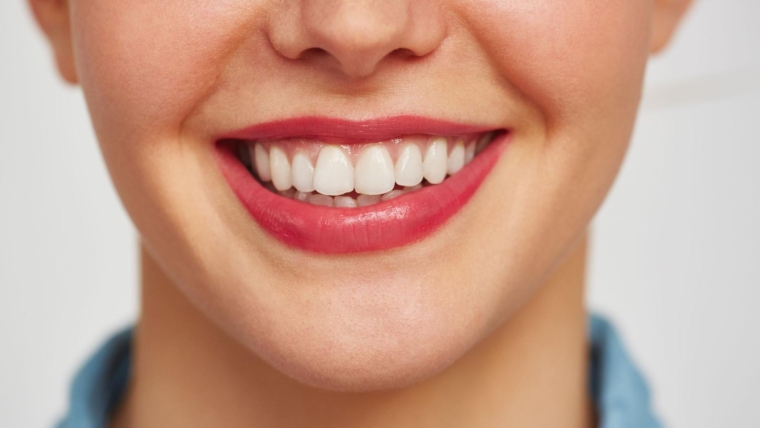
Composite bonding is a minimally invasive, highly effective cosmetic treatment that can dramatically enhance your smile in just one visit. At Manor House Dental, one of the most frequent questions we receive after bonding treatment is:
“Can I eat curry with composite bonding?”
It’s a valid concern—especially for individuals who enjoy flavourful and colourful cuisine. While composite bonding offers immediate cosmetic improvements, maintaining those results depends heavily on lifestyle choices, particularly diet.
Get Advice on Protecting Your Bonding
Table Of Content
-
- What composite bonding is and how it works
- The effects of pigmented foods like curry on dental bonding
- What makes composite resin more susceptible to staining
- Strategies to enjoy your favourite foods without compromising your smile
- Treatment options if bonding becomes discoloured
- Expert tips to prolong the longevity of your dental bonding
What Is Composite Bonding?
Composite bonding—also known as dental bonding—is a cosmetic dental procedure used to correct minor imperfections such as:
-
- Chipped or fractured teeth
- Discolouration
- Gaps between teeth
- Slight misalignment
- Uneven or worn edges
The process involves applying a tooth-coloured composite resin to the surface of the affected tooth. This resin is shaped, hardened with a special light, then polished to match the surrounding teeth.
Key Benefits of Composite Bonding
-
- Minimally invasive: Usually no drilling or anaesthesia is required
- Immediate results: Completed in a single appointment
- Cost-effective: More affordable than porcelain veneers
- Aesthetic improvement: Natural-looking, tooth-coloured material
- Preserves natural tooth structure: Often no enamel is removed
At Manor House Dental, we use high-grade resin materials that deliver excellent aesthetic results and durability. However, like all cosmetic dental procedures, ongoing maintenance is crucial.
Is Composite Resin Prone to Staining?
 Yes. One of the most important factors to consider after undergoing composite bonding is its increased vulnerability to staining compared to natural enamel. While tooth enamel is dense and highly resistant to pigment absorption, composite resin is more porous and hydrophilic, meaning it can absorb liquids and coloured particles more easily over time.
Yes. One of the most important factors to consider after undergoing composite bonding is its increased vulnerability to staining compared to natural enamel. While tooth enamel is dense and highly resistant to pigment absorption, composite resin is more porous and hydrophilic, meaning it can absorb liquids and coloured particles more easily over time.
Why Composite Resin Is More Likely to Stain:
-
- Micro-textured surface: Even after professional polishing, composite resin does not achieve the same level of smoothness as natural enamel, allowing pigments to adhere more readily.
- Porosity of the material: The resin’s structure permits deeper penetration of staining agents found in food and drink.
- Natural ageing: As the material wears over time, it may develop fine surface irregularities, increasing susceptibility to discolouration.
- Lack of self-repair: Unlike enamel, which undergoes natural remineralisation through saliva and fluoride, composite resin does not regenerate or strengthen itself.
As a result, common staining agents such as coffee, tea, red wine, tobacco and the richly coloured spices found in curry can gradually cause visible discolouration on bonded teeth—especially with frequent exposure and inadequate oral hygiene.
What’s in Curry That Causes Staining?
Curry dishes, especially those with bold flavours and bright colours, often include a combination of strongly pigmented ingredients, such as:
| Ingredient | Staining Potential | Notes |
| Turmeric | Very high | Main culprit in yellow-orange stains |
| Paprika | High | Found in tikka or madras sauces |
| Chilli powder | Moderate | Adds heat and colour |
| Tomato paste | Moderate to high | Used in many curry bases |
| Mustard seeds | Medium | Oil-based stains |
| Cumin and coriander | Mild | Adds aromatic depth but can contribute to buildup over time |
These spices bind easily to the porous surface of composite resin, especially when consumed regularly.
Can You Eat Curry After Composite Bonding?
Yes, you can eat curry after composite bonding. However, it’s important to be aware of the potential for staining and take proper care to maintain your results.
Composite bonding is not damaged structurally by curry. The concern is cosmetic. Over time, consistent consumption of colourful foods like curry without appropriate oral hygiene may result in:
-
- Yellowing or orange-toned stains
- Uneven discolouration (bonded teeth may appear darker or lighter than surrounding natural enamel)
- The need for premature re-polishing or even replacement of the composite material
How Often Is Too Often?
If you eat curry occasionally, there is very little risk of significant staining—especially if you follow good oral hygiene habits. However, frequent curry consumption (multiple times per week) can increase the likelihood of pigment adhesion, especially in anterior (front) bonded teeth that are more visible.
Preventing Stains from Curry on Composite Bonding

There is no need to avoid curry altogether. With the right care, you can enjoy your favourite foods while keeping your smile bright.
Evidence-Based Prevention Strategies
-
- Rinse After Eating
Rinsing your mouth with water immediately after eating curry helps flush away residual pigments before they can absorb into the resin. - Wait Before Brushing
Acidic foods can soften the resin surface temporarily. Wait 30 to 60 minutes after eating before brushing to avoid surface erosion. - Use a Soft-Bristled Brush and Non-Abrasive Toothpaste
This ensures you don’t prematurely wear down the bonding while still removing daily surface stains. - Consume Pigmented Foods in Moderation
Frequency is more damaging than intensity. Eating curry once a week is much less impactful than doing so daily. - Add Dairy to Your Meal
Foods like yoghurt or milk-based sauces may help neutralise some staining potential. - Professional Hygiene Appointments
At Manor House Dental, our hygiene team can professionally polish bonded surfaces to remove light staining and restore brightness. - Avoid Smoking
Tobacco products dramatically increase staining risk, especially when combined with colourful foods.
- Rinse After Eating
Book Your Composite Bonding Consultation
What Happens If Composite Bonding Does Get Stained?
Stained bonding does not pose any health risk, but it can be an aesthetic concern. Fortunately, there are several effective treatment options:
1. Polishing
Light surface stains can usually be removed with professional polishing during a hygiene or cosmetic review appointment.
2. Surface Reconditioning
For deeper or more widespread stains, a dentist can gently remove the stained outer layer and apply a new thin layer of composite resin.
3. Replacement
If the bonding is old or significantly stained, the best option may be to replace the composite entirely to restore its natural colour.
Note: Whitening treatments do not work on composite resin. If your natural teeth are whitened, the bonding will not change colour and may need to be redone to match.
Dietary Tips to Preserve Composite Bonding
-
 Drink water during and after meals
Drink water during and after meals- Include crunchy vegetables (carrots, celery) in your meals—they help clean tooth surfaces naturally
- Consider limiting black coffee, red wine and soy sauce—these are known composite-stainers
- If you do indulge, be consistent with post-meal oral hygiene
Composite Bonding Maintenance Schedule
To maximise the lifespan and aesthetics of your bonding, we recommend the following maintenance plan:
| Timeframe | Action |
| Daily | Brush twice, floss once, rinse after coloured meals |
| Monthly | Self-check for changes in colour or shape |
| Every 6 months | Professional hygiene visit |
| Every 12–18 months | Cosmetic review and potential polishing |
| Every 5–7 years | Assessment for bonding refresh or replacement |
At Manor House Dental, we monitor our cosmetic patients carefully to ensure long-term success and satisfaction.
Why Choose Manor House Dental in Birmingham?
Manor House Dental is a trusted name in cosmetic and general dentistry, serving patients across Birmingham and surrounding areas. When it comes to composite bonding, we offer:
-
- Expertise in smile aesthetics
- Premium composite materials for superior colour retention
- Comprehensive aftercare support
- Tailored advice based on your lifestyle and diet
- Transparent pricing and treatment options


